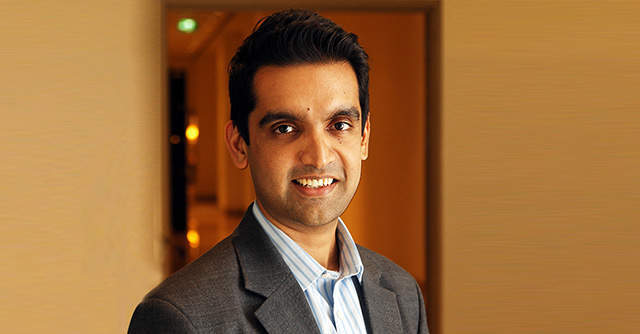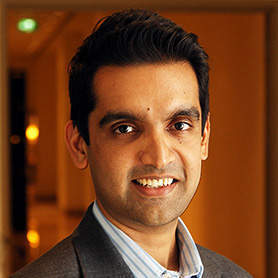
What does the future of ecommerce hold in store for India?


The premise was that the ecommerce battle was not over. That has proved to be true. We have seen more innovation in ecommerce in the two years since the acquisition of Flipkart by Walmart, than in the years before that. There are several reasons to be optimistic about the market opportunity. After all, ecommerce has seen massive adoption and internet penetration seems to be only going in one direction -- up. Then why don't we see the effects of the ecommerce juggernaut on the ground or in transactions or beyond the metros and large cities?
Building for Bharat users requires a very different approach and mindset than building for the top 10% of Indian internet users.
With this context in mind, we attempted to address the question about the "Future of Ecommerce in India" in one of the key sessions at the TiE Internet Day conference a few days ago. Joining me were some founders, whose companies are pioneering exactly this in various ways including Vineeta Singh of Sugar Cosmetics, Sachin Jaiswal of Niki.ai, Vineet Rao of Dealshare and Prateek Agarwal of Meesho.

The central theme was -- what does the future hold for ecommerce? How do consumers in Bharat (as opposed to India) behave, shop and consume products? What's the role of social behaviour on shopping? Here are some insights that emerged from the discussion.
The market opportunity is large with actual on-ground adoption still low
The behaviour of consumer purchases in small towns and cities hasn’t changed much in decades. What’s changed is the connectivity between and amongst businesses and consumers. Retail has largely remained the same especially outside the metros, 70-80% of spends go to categories including groceries, FMCG (fast-moving consumer goods) products etc. The real opportunity is to focus on what people really need (not what they want) -- that is a different paradigm from consumers in large metros and cities.

Income and the ability to spend has a large part to play in how deep organised retail has penetrated. 75% of India's population has an income level of below $2,500 annually and the focus of their spends in majority is on necessity.
A retail revolution is waiting to happen over the next 10+ years as consumers get more connected and accustomed to a digital way of life. Most of organized retail in India has been focused on the top 10% of consumers and the top 10% brands. Beyond the 100M transacting users, Jio ushered the wave of broadband mobile from 2016 onwards. For most users, Facebook and Instagram are what they’re familiar with digitally. More tellingly, the penetration of national brands in Tier 3 and 4 cities is quite small. Both from a price perspective and to consumers being used to their regional/local brands. That to me is the real opportunity to aggregate demand digitally.
Challenges exist but tailwinds are stronger than ever before

Payments and infrastructure were the structural challenges during the first 10 years on ecommerce. Thanks to the efforts of many startups as well as government initiatives like UPI (unified payments interface), those issues largely are in the process of getting solved.
One of the main issues currently is with usability of a digital product and bringing about consumer behavioural change. With largely English based products where the UI is focused on digitally savvy users, there is a large amount of hesitation to adopt these apps. Fear of making a mistake or doing a transaction where money may not come back often leads to no transaction at all. Building trust goes a long way and takes a long time.
Most commerce outside of metros is transacted in local languages (text, video or voice). These consumers don’t necessarily shop on Amazon or Flipkart, even though they would have heard of these platforms. Discovery of products, browsing through a catalogue and making a purchase decision is completely different for users in Tier 2, 3 and 4 cities. Discovery is not search based (that's reserved for India 1) but has to be thought through the mindset and existing behavior of consumers living in a place like Panipat, Vellore or Junagadh.

Ecommerce will grow via vernacular and video/voice
Additionally, getting the user behaviour changed and used to a new platform also requires hand-holding and creating the product to cater to that user. Distribution channels to reach customers are also different and customer acquisition through paid social channels have low retention. Similarly, product curation and getting the supply chain in place is also very different. Having a mindset which addresses all these issues in a framework requires a dedicated focus and patience.
Role and rise of social / community commerce

For consumers in these places, digital assistance and the role of someone either in your social circle or your locality who can help digitize is crucial. Consumers also have a lot more idle time compared to users in metro cities and hence the role of (immediate) society is a lot more acute in day to day life.
Content and community engagement through videos is key in getting familiarity built into the mindset of users. Engaging content helps create and build user behaviour.
The role of influencers is also crucial and unlike that of influencers focused on the top 10% of India users. It's not push-based but much more around understanding local nuances and tastes, product curation and assisted buying

Leveraging these pillars, to get more users to start buying products and then introducing it as a way of life is the circle of commerce adoption where the opportunity lies. Key to understanding the Bharat consumer is in getting the product positioning and pricing correct (cannot be "mass premium" - small market segment currently) as well as having an omni-channel model (in some shape or form).
Retail in India is approximately an $800 billion market today and is projected to be over $2 trillion by 2028. Organized retail today is 10-15% of that market and ecommerce is a small subset of that. The market is roughly split 60:40 between grocery and non-grocery, with apparel/footwear, electronics & appliances and leisure/personal goods among the larger categories within non-grocery. India’s offline retail presence (measured in retail space per capita) and share of modern retail is at the lower end vs global peers, with a population density among the highest in the world. These factors augur well for online to win market share vs offline. The network effects of ecommerce build very fast and that’s the central role technology has to play in growing the market.
Editor’s Note- The article first appeared on LinkedIn and is republished with permission from the author.

Karan Mohla
Karan Mohla is Partner - Chiratae Ventures (formerly IDG Ventures India). The views expressed in this article are his own.
